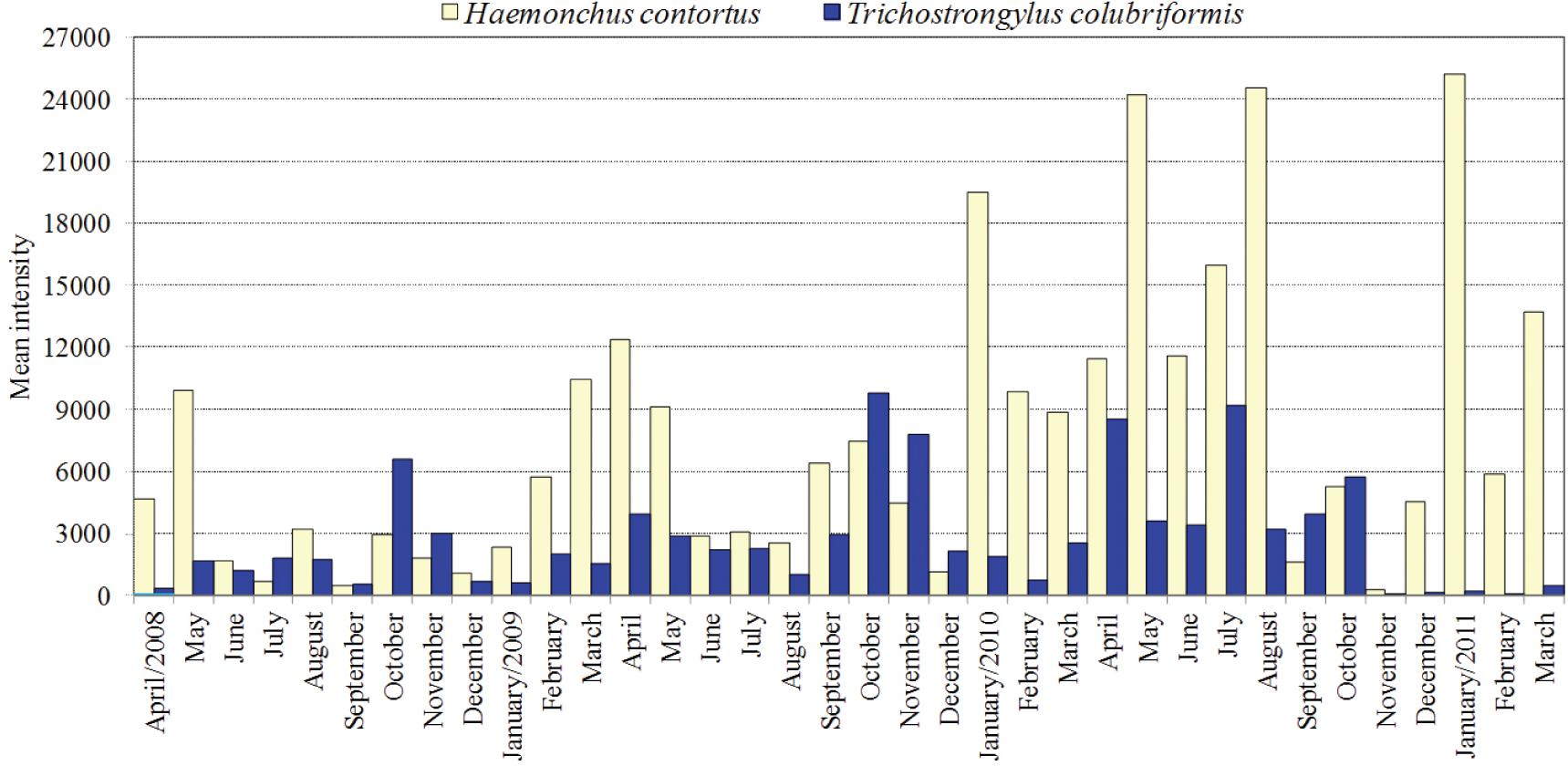Gastrointestinal nematode infections were evaluated in sheep raised in Botucatu, state of São Paulo, Brazil between April 2008 and March 2011. Every month, two tracer lambs grazing with a flock of sheep were exposed to natural infection with gastrointestinal nematodes for 28 consecutive days. At the end of this period, the lambs were sacrificed for worm counts. Haemonchus contortus presented 100% of prevalence. The seasons exerted no significant influence on the mean intensity of H. contortus, which ranged from 315 worms in November 2010 to 2,5205 worms in January 2011. The prevalence of Trichostrongylus colubriformis was also 100%, with the lowest mean intensity (15 worms) recorded in February 2011 and the highest (9,760 worms) in October 2009. In the case of T. colubriformis, a significant correlation coefficient was found between worm counts vs. rainfall (r = −0.32; P <0.05). Three other nematodes species were found in tracer lambs, albeit in small numbers. Their prevalence and mean intensity (in parenthesis) were as follows: Oesophagostomum columbianum 28% (25.2), Cooperia curticei 7% (4.5) and Trichuris spp. 2% (1). In conclusion, the environmental conditions of the area proved to be highly favorable for the year-round transmission of H. contortus and T. colubriformis.
Haemonchus contortus ; Trichostrongylus colubriformis ; tracer lamb; nematode burden; seasonal variation

